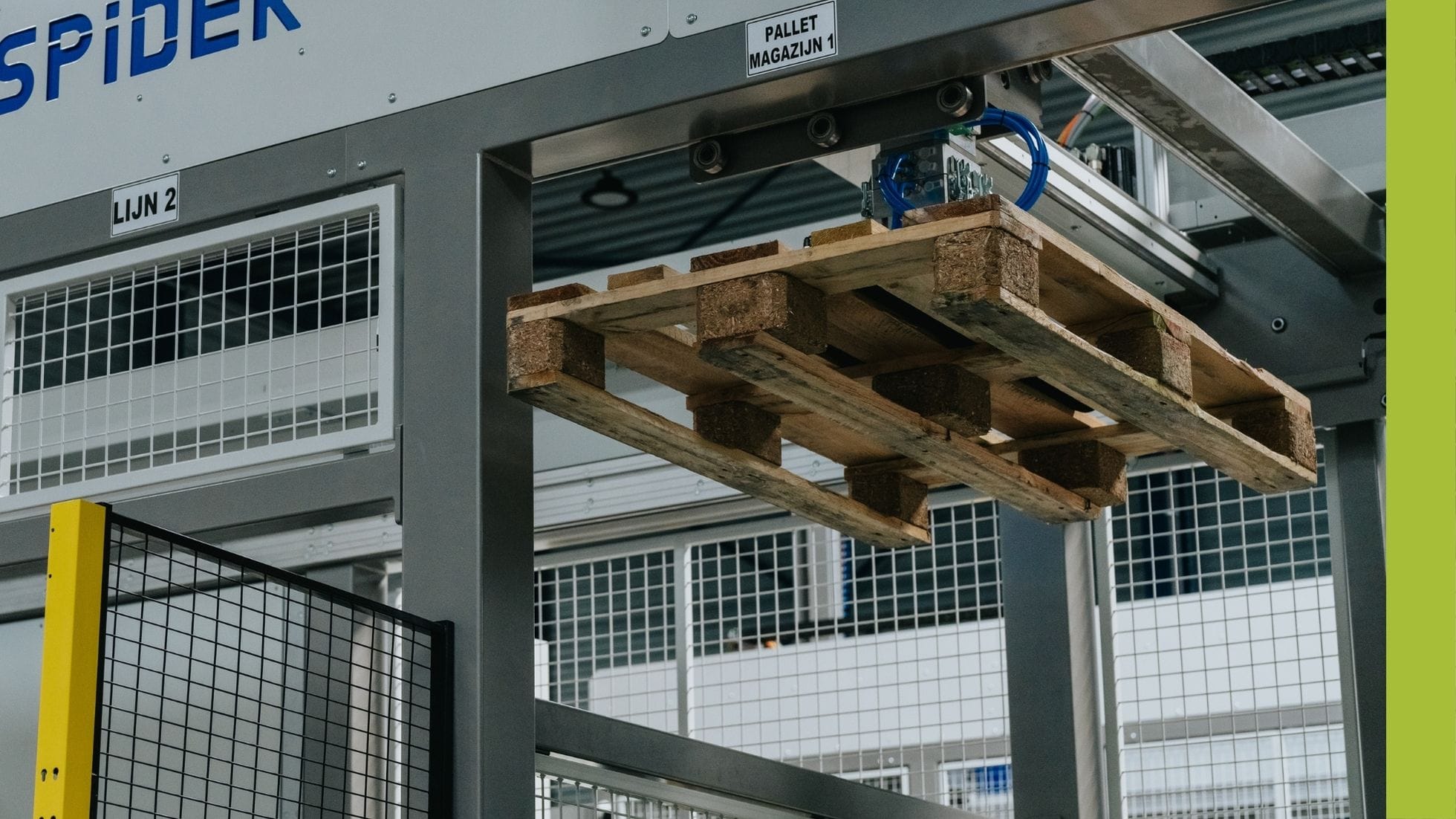Automated depalletising plays a crucial part in streamlining production processes. But what exactly is depalletising, and why should manufacturers consider automating the process? In this blog, we’ll explain just what’s involved and explore some of the benefits in high-volume manufacturing.
What is depalletising?
Depalletising is the process of transferring goods from a pallet onto another surface, usually a conveyor or production line. Traditionally done by hand, it’s a laborious and time-consuming process involving repetitive movements and, in some cases, heavy lifting.
Automatic depalletisers automate the process, moving items with greater speed, efficiency and precision to make it quicker and safer. There are two types of automatic depalletiser, each of which works in a slightly different way:
- Layer depalletisers remove a whole layer of products from a pallet at a time. Ideal for higher-speed applications and heavy or bulky packages, they can be programmed according to specific requirements and have a large output of up to 60 packs per minute.
- Cartesian or Pick and Place depalletisers have a structural beam and axes, which are used in conjunction with grippers to move items in three directions. Although they perform at a slower speed than a layer depalletiser, they’re highly flexible with low implementation costs.
What are the advantages of automated depalletising?
Automated depalletisers can be designed to handle different products and work with multiple types of pallets, including wood, plastic and metal. This makes them a versatile addition to a manufacturing operation, offering a number of benefits:
1. Increased efficiency
Fast and consistent operation means automated depalletising systems significantly improve overall efficiency. They can run continuously without the need for breaks, which reduces downtime and prevents production bottlenecks, resulting in higher throughput.
2. Enhanced workplace safety
Automating depalletising eliminates the need for repetitive lifting, bending and reaching, which are common causes of strain and manual handling injuries. Built-in safety features like sensors and emergency stops provide additional protection for workers, reducing the risk of workplace accidents and improving overall safety.
3. Consistent quality
With less room for human error, the risk of product damage and inconsistency is reduced. Products are placed precisely on conveyors preventing issues further down the production line and reducing wastage.
4. Improved reliability
Consistent operation minimises human error and ensures high production rates, regardless of personnel availability or fatigue. Predictive maintenance alerts help prevent unexpected downtime by notifying managers when servicing is needed, ensuring smooth operations and reducing disruptions.
5. Reduced costs
By replacing manual labour with robotic systems, companies can reduce labour costs and lower turnover rates. Depalletising is physically demanding, and high turnover is common in this role. Automation provides a stable, reliable workforce and reduces the risks of worker fatigue and injury, resulting in long-term cost savings.
Integrating automatic palletisers into high-volume manufacturing
The role of de-palletisers goes beyond unloading pallets at the start of the production line – they can be used throughout the process to transport parts from one line to another, ensuring smooth workflow. Systems can also be integrated with other technologies, such as conveyor systems for efficient material transfer and handling systems for streamlined product storage and movement.
To find out more about how an automatic depalletiser can enhance your operations, contact us today for a free consultation.

